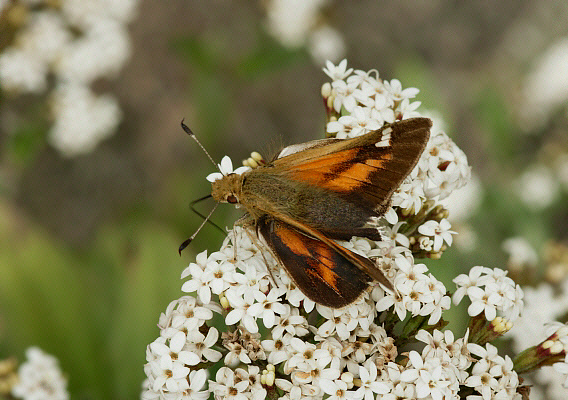
Introduction
There are 1237 described species of Hesperiine ( grass-feeding skippers ) in the neotropical region, and probably at least another 100 still awaiting discovery.
Many of the species follow the basic “Hesperia” pattern – a dark chestnut ground colour with an orange or yellow bar stretching from midway along the dorsum towards the apex, and a broad streak of the same colour stretching from the wing base along the costa. Examples of genera with this pattern include Anthoptus, Hylephila, Lento, Mellana, Metron, Molo, Polites, Saturnus, Serdis and Synapte. The patterns are sufficiently different from one another to make identification to genus relatively easy, but often it is very difficult to distinguish between individual species.
The most obvious features that distinguish Serdis from the other genera are the black-tipped antennae, and the size of the butterflies – at about 5cms wingspan they are decidedly larger than any of the other similar genera.
The genus Serdis contains 3 species – statius, venezuelae and viridicans. The 3 spots near the apex of the forewing are white in venezuelae and viridicans, but yellow in statius.
Serdis viridicans is restricted to the high Andes of Venezuela, Colombia, Ecuador and Peru.
Habitats
This species breeds on the high paramo and puna grasslands of the Andes, at altitudes between about 2500-3200m. These grasslands are only found above the tree-line, and at most times of the year are above the cloud layer.
Lifecycle
I have no data relating to any Serdis species, but in common with other Hesperiines it is almost certain that the larval foodplants are grasses.
Adult behaviour
The butterflies are usually encountered as singletons, basking on rocks or nectaring at flowers along the roadsides of Andean mountain passes.
